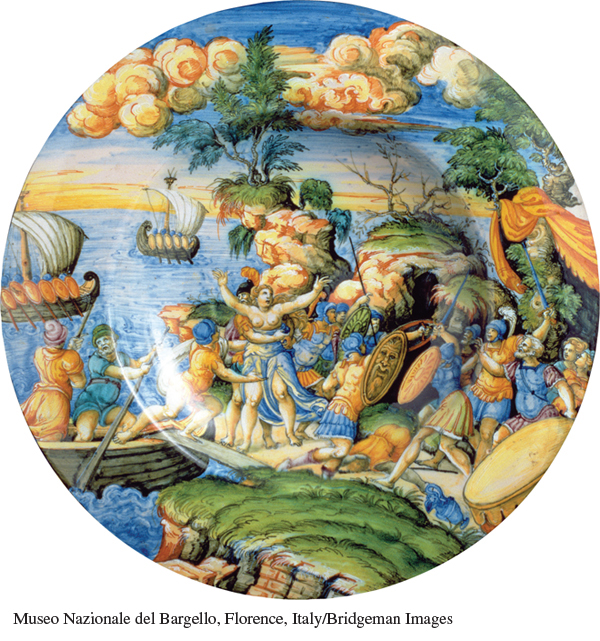A History of Western Society: Printed Page 372
A History of Western Society, Value Edition: Printed Page 358
A History of Western Society, Concise Edition: Printed Page 373
Patronage and Power
In early Renaissance Italy, powerful urban groups often flaunted their wealth by commissioning works of art. The Florentine cloth merchants, for example, delegated Filippo Brunelleschi (broo-
Increasingly in the late fifteenth century, wealthy individuals and rulers, rather than corporate groups, sponsored works of art. Patrician merchants and bankers, popes, and princes spent vast sums on the arts to glorify themselves and their families. Writing in about 1470, Florentine ruler Lorenzo de’ Medici declared that his family had spent hundreds of thousands of gold florins for artistic and architectural commissions, but commented, “I think it casts a brilliant light on our estate [public reputation] and it seems to me that the monies were well spent and I am very pleased with this.”7
Patrons varied in their level of involvement as a work progressed; some simply ordered a specific subject or scene, while others oversaw the work of the artist or architect very closely, suggesting themes and styles and demanding changes while the work was in progress. For example, Pope Julius II (pontificate 1503–1513), who commissioned Michelangelo to paint the ceiling of the Vatican’s Sistine Chapel in 1508, demanded that the artist work as fast as he could and frequently visited him at his work with suggestions and criticisms. Michelangelo, a Florentine who had spent his young adulthood at the court of Lorenzo de’ Medici, complained in person and by letter about the pope’s meddling, but his reputation did not match the power of the pope, and he kept working until the chapel was finished in 1512.

In addition to power, art reveals changing patterns of consumption among the wealthy elite in European society. In the rural world of the Middle Ages, society had been organized for war, and men of wealth spent their money on military gear. As Italian nobles settled in towns (see Chapter 10), they adjusted to an urban culture. Rather than employing knights for warfare, cities hired mercenaries. Accordingly, expenditures on military hardware by nobles declined. For the noble recently arrived from the countryside or the rich merchant of the city, a grand urban palace represented the greatest outlay of cash. Wealthy individuals and families ordered gold dishes, embroidered tablecloths, wall tapestries, paintings on canvas (an innovation), and sculptural decorations to adorn these homes. By the late sixteenth century the Strozzi banking family of Florence spent more on household goods than they did on clothing, jewelry, or food, though these were increasingly elaborate as well.
After the palace itself, the private chapel within the palace symbolized the largest expenditure for the wealthy of the sixteenth century. Decorated with religious scenes and equipped with ecclesiastical furniture, the chapel served as the center of the household’s religious life and its cult of remembrance of the dead.
